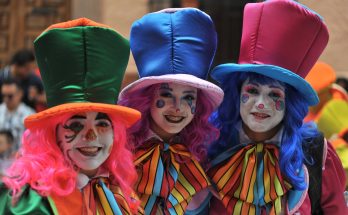Art and Culture in San Miguel de Allende
By Carola Rico
As part of the activities of the Festival of the Arts of San Miguel de Allende (FASMA), there is an opening of a toy exhibition. It’s titled “The Never-ending Story,” and it’s a sample of Guanajuato toys at the Museo de La Esquina.
The director of this colorful space, Mrs. Angélica Tijerina (on the cover image), invited us to take a tour of the exhibition of artisan toys from Guanajuato, where we could appreciate the works of different municipalities. Tijerina reported that the toy museum will be 12 years old this September, but Mrs. Angélica has been a collector for more than 60 years. Her fondness for colors and handicrafts and her visits to various markets led her to acquire a unique and typical piece of each place. Later she decided that she wanted her pieces displayed in San Miguel de Allende. This is how the museum began, and it continues with the preservation of these crafts and the promotion of the artisans who make these unique pieces.
Another important factor for the collection was the contests. The first year that the museum opened, there was a national contest. That event was organized through FONART (National Fund for the Promotion of the Arts), and after that, seven more contests were held.
Tijerina reported that there are between three or four toy museums in Mexico—in Aguascalientes; Mexico City, with a museum of old toys; and a puppet museum in Zacatecas. But they do not have the characteristics of the Museo de La Esquina.

For this exhibition, which is part of the activities of the San Miguel Arts Festival, more than 70 new pieces will be exhibited. The museum, however, has around three thousand pieces that you can see. The objects on display are from many artisans in various communities. Juventino Rosas, Guanajuato City, Celaya, Salamanca, Tierra Blanca, Comonfort, Apaseo el Alto, Acámbaro, San Felipe, and Dolores Hidalgo. Of course, San Miguel de Allende and its rural communities are also represented, where they make basketry and tin leaf as well as piñatas.
Tijerina explained that each piece in the museum is part of a collection and will remain in the custody of the museum. The work of state artists is promoted through these unique pieces. “We began as a museum of the foundation for the conservation of Mexican popular toys, and the goal is to spread Mexican popular toys and for artisans to continue making the pieces,” explained Tijerina.
“The Mexican folk toy is an object that can become ephemeral, because it does not have durability because of the type of material with which they are made; but the charm of these toys is that they are unique,” she concluded.




